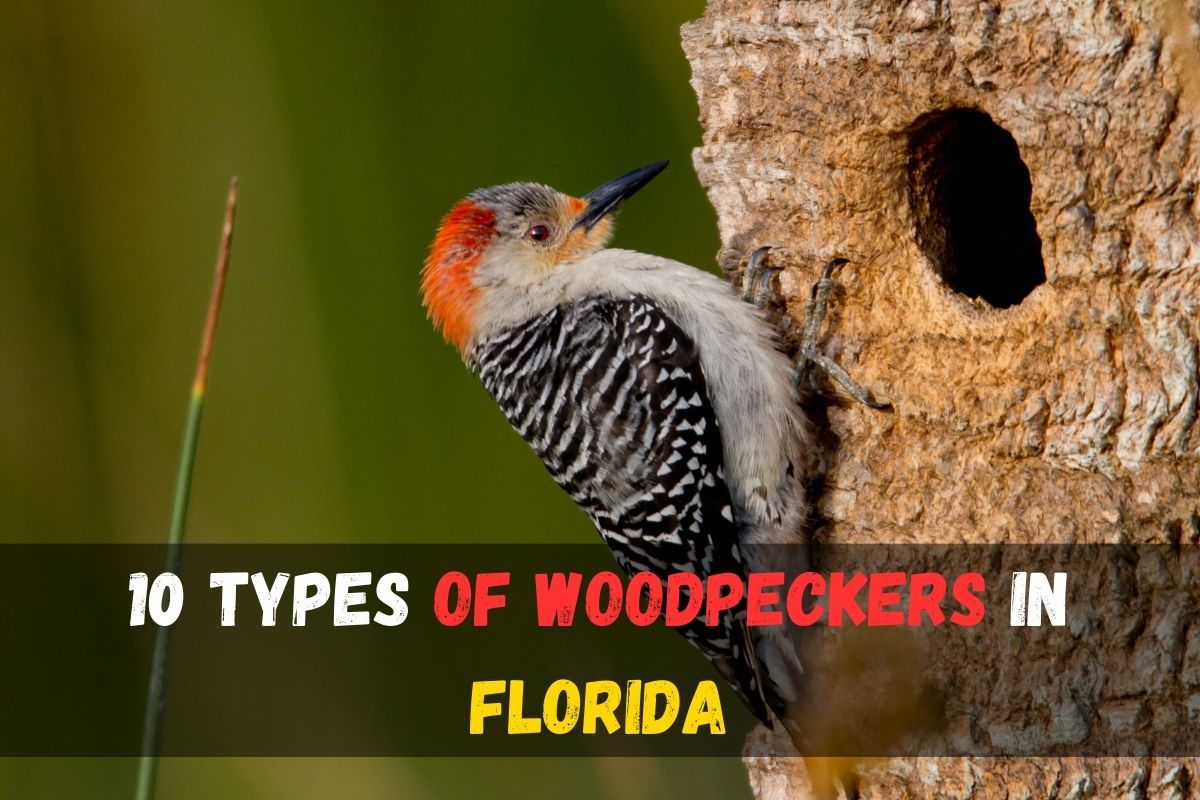Florida is home to a diverse array of wildlife, and among the fascinating bird species that inhabit the state, woodpeckers stand out as distinctive and interesting creatures. These birds play a crucial role in Florida’s ecosystems, contributing to the balance of the natural environment
Florida boasts several species of woodpeckers, each with its unique characteristics. One of the most iconic is the Pileated Woodpecker, recognizable by its striking red crest and large size. This impressive bird is known for its loud drumming sounds, which echo through Florida’s forests
4 Types of eagles in Florida
Woodpeckers in Florida inhabit a variety of environments, from dense forests to suburban areas. Longleaf pine forests, in particular, provide a suitable habitat for several woodpecker species. Dead trees, known as snags, are essential for woodpeckers as they provide nesting sites and serve as foraging grounds for insects.
In suburban and urban areas, woodpeckers may adapt to using human-made structures such as utility poles and wooden buildings. This adaptability is a testament to their resilience in coexisting with human development.
Bird by State
Florida’s strategic location along major bird migration routes makes it a crucial stopover for countless species. During the fall and spring migrations, birdwatchers have the opportunity to witness impressive flocks of warblers, raptors, and shorebirds as they traverse the state. Coastal areas like the Everglades and the Florida Keys are particularly significant for migratory bird sightings
10 Types of Woodpeckers in Florida
Red-headed Woodpecker
Identification
The Red-Headed Woodpecker (scientific name: Melanerpes erythrocephalus) is a captivating bird native to Florida, known for its striking appearance. Adults have a bold black body, contrasting with fiery-red heads, necks, and breasts. The wings and tail showcase a black-and-white barred pattern, while juveniles sport brownish-black plumage with white spots on the wings and dull red cheeks. This medium-sized woodpecker measures around 7-9 inches in length, with a wingspan of 12-14 inches.
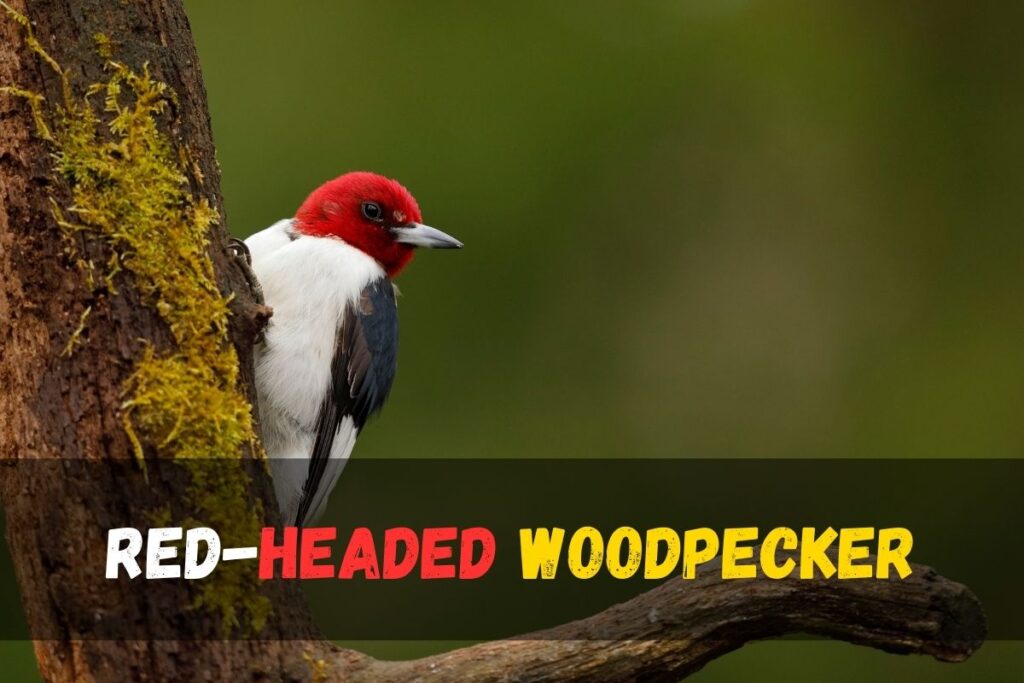
Where to Look for Them
To spot Red-Headed Woodpeckers in Florida, explore pine forests, wetlands, and urban parks. Notable locations include Paynes Prairie Preserve State Park, Marjory Stoneman Douglas Pine Rocklands, Ocala National Forest, Merritt Island National Wildlife Refuge, and Fakahatchee Strand Preserve State Park. Observing during their peak activity times, early morning or late afternoon, increases the likelihood of sightings.
Occasionally, these woodpeckers may visit backyard feeders, particularly suet feeders. They have a diverse diet, including seeds, corn, acorns, beechnuts, pecans, and various fruits. However, they are slightly less common at feeders compared to other woodpecker species.
Appearance
The Red-Headed Woodpecker’s distinct features include a strong, chunky build, a short triangular beak, and a vibrant redhead. Both males and females exhibit a red crown, but the males are more extensive, covering the entire head. The female has a red nape and a white line above the eye. Their “flying checkerboard” pattern, with contrasting black, white, and red, makes them easily recognizable.
Habitat
These woodpeckers prefer open woodlands with a mix of deciduous and coniferous trees. They also inhabit orchards, parks, and suburban areas with suitable trees for foraging and nesting. Red-headed woodpeckers have a territorial nature, fiercely defending their nesting sites and territories.
Diet
Red-headed woodpeckers are omnivorous, feeding on insects, fruits, nuts, and seeds. They exhibit opportunistic feeding behavior, adjusting their diet based on seasonal availability. During summer, they heavily consume insects, while in winter, seeds and nuts become prominent. Their unique behavior includes catching insects mid-air and storing food in tree cavities for later consumption.
Population
Although currently categorized as “Least Concern” by the IUCN, the Red-Headed Woodpecker population has faced a decline due to habitat loss and the scarcity of dead trees for nesting. Conservation efforts, including the creation of artificial nest cavities and bird feeders, aim to support their population. Vigilance in preserving dead trees and establishing new nesting sites is crucial for the continued well-being and potential growth of the Red-Headed Woodpecker population in Florida.
Red-bellied Woodpecker
Identification
The Red-bellied Woodpecker (Scientific name: Melanerpes carolinus) is a distinctive woodpecker species found in Florida and across the Eastern United States. Identifying features include a red cap on the head, a creamy-white belly (despite the name), and black and white stripes on the back. Males have a red cap, while females display a red nape.
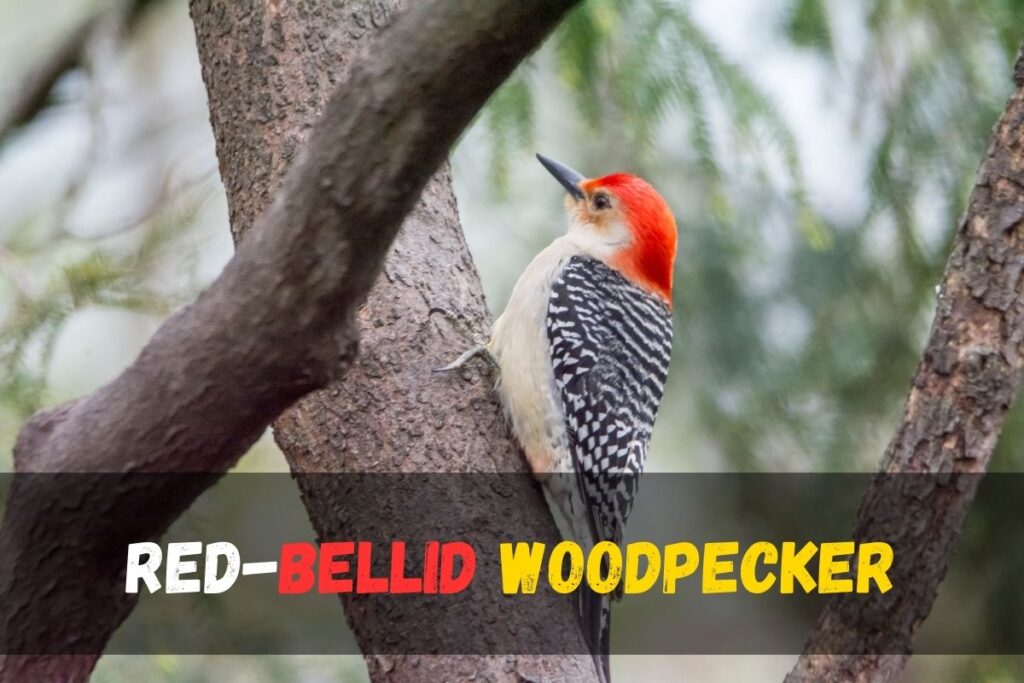
Where to Look for Them
Red-bellied Woodpeckers can be observed throughout Florida, with a more common presence in the northern and central regions. They adapt well to various environments, including forests, woodlands, suburban areas, and even parks. Pine forests and pine-oak forests are particularly good places to spot them.
Appearance
Measuring around 9-10 inches in length, these medium-sized woodpeckers have a strong, chunky build and a wingspan of 12-14 inches. The male’s head, breast, and belly are bright reddish, while the female has a more subdued reddish tinge. Both sexes exhibit black and white barring on the wings and tail, with a white ring around the base of the beak.
Habitat
Red-bellied Woodpeckers are adaptable, residing in a range of habitats, from mature trees and wooded swamps to suburban areas. They exhibit a cavity-nesting behavior, often reusing the same nest hole year after year. The species is known for its territorial behavior, defending its nest cavity from other woodpeckers, bird species, and predators.
Diet
Their omnivorous diet includes insects, seeds, nuts, and fruits. Red-bellied Woodpeckers use their strong beaks to forage on tree trunks, branches, and leaves for insects. They also display a unique feeding behavior, creating rectangular or horizontal holes in trees to stash their food. The species is attracted to suet and other bird feeders, showcasing their adaptability to human-altered landscapes.
Population
Red-bellied Woodpeckers have a stable population and are classified as “Least Concern” by the International Union for Conservation of Nature (IUCN). Their adaptability to various habitats, including suburban areas, has contributed to their success. The species has benefited historically from the clearing of forests for agriculture, creating open woodlands and forest edges that serve as ideal habitats.
Downy Woodpecker
Identification
The Downy Woodpecker, scientifically known as Picoides pubescens, is the smallest woodpecker species in North America, measuring around 6-7 inches in length. The back of males’ heads is characterized by a distinct red patch, whereas females exhibit a black patch in the same location. Their black and white plumage, along with a white belly and spotted wings, makes them easily identifiable. This species shares similarities with the Hairy Woodpecker but is smaller in size, with a straight-backed posture and a chisel-like bill.
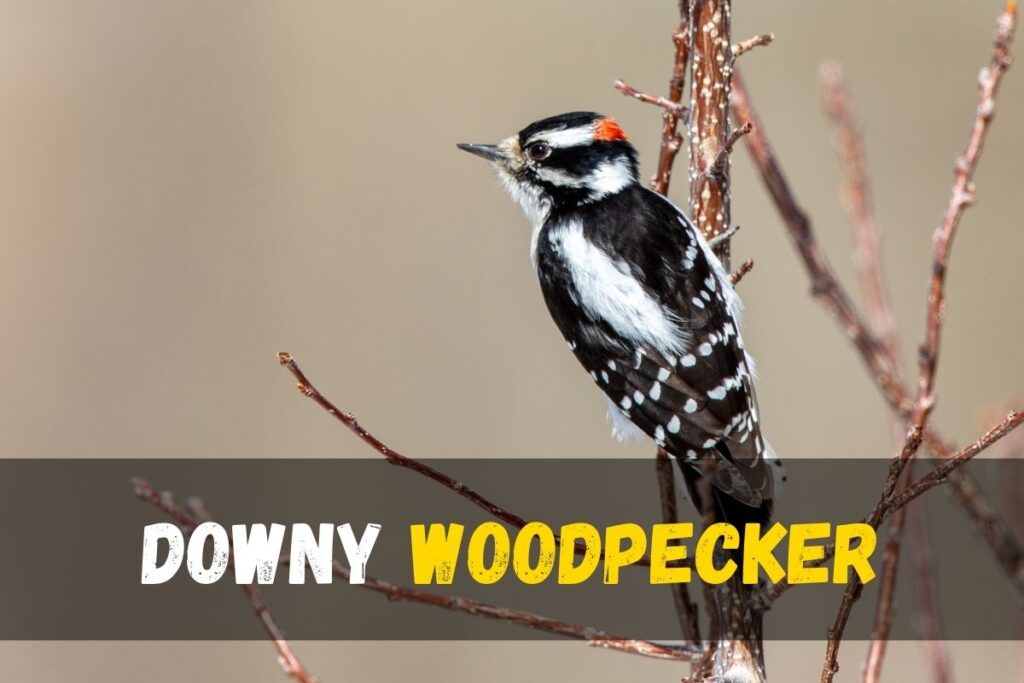
Where to Look for Them
Downy Woodpeckers are highly adaptable and can be found throughout Florida, including wooded areas, forests, parks, and even residential areas with mature trees. Prime locations for observing them include the Green Swamp Wilderness Preserve, Wekiva Springs State Park, Osceola Wildlife Area, and Big Cypress Wildlife Area. as major parks in and around cities.
Appearance
These small woodpeckers have a unique black-and-white pattern, with bold stripes on the head and wings. Their white underparts, coupled with a red or black patch on the head, depending on gender, make them visually distinctive. Despite their tiny size, they exhibit acrobatic movements and can access various parts of trees, including small stems.
Habitat
The Downy Woodpecker is the most common woodpecker species in Florida, thriving in diverse habitats such as residential areas, cities, farmland, and wooded regions, especially where pine trees are present. They are cavity nesters, often choosing dead or live trees with dead areas to create nests lined with wood chips.
Diet
As omnivorous birds, Downy Woodpeckers have a varied diet. They primarily feed on insects like beetles, ants, and caterpillars, obtained by pecking at tree bark. Additionally, they consume sap from tree sap wells, fruits, nuts, seeds (such as sunflower seeds, millet, and peanuts), and occasionally suet. Their foraging habits include drilling into wood and extracting insects with their long, sticky tongues.
Population
While the Downy Woodpecker is the most common in Florida, certain areas may experience population declines due to habitat loss and degradation. Despite these challenges, the species is currently classified as “Least Concern” by the International Union for Conservation of Nature (IUCN). Conservation efforts focus on protecting and restoring critical habitats, controlling invasive species, and promoting sustainable forestry practices to ensure the continued well-being of this fascinating woodpecker species.
Hairy Woodpecker
Identification
The Hairy Woodpecker (Picoides villosus) is a distinctive bird with striking black and white feathers, a long chisel-like beak, and a unique personality. It is often confused with the Downy Woodpecker but can be identified by its larger size, longer bill, and the presence of long, black hairs on its nape and shoulders.
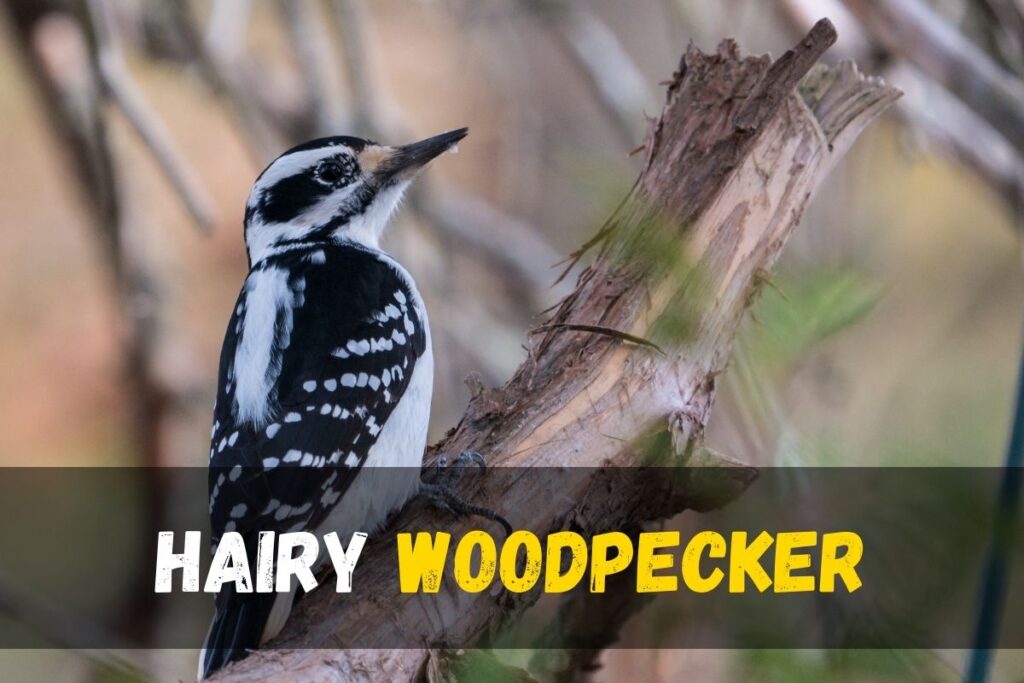
Where to Look for Them
Hairy Woodpeckers are commonly found in wooded areas throughout Florida. Ideal locations for spotting them include the Ocala National Forest, Apalachicola National Forest, Myakka River State Park, Big Cypress National Preserve, Wekiva Springs State Park, Merritt Island National Wildlife Refuge, J.N. “Ding” Darling National Wildlife Refuge, and the St. Marks National Wildlife Refuge.
Appearance
The Hairy Woodpecker is larger than the Downy Woodpecker, measuring about 7.5 to 9.8 inches in length, with a wingspan of approximately 13 to 16 inches. It has distinctive black and white markings, including a black head with a white stripe, a black back and wings with white spotting, and a black tail with white outer feathers. Adult males have a red spot on the back of their heads.
Habitat
Native to North America, the Hairy Woodpecker thrives in various wooded habitats, including deciduous forests, coniferous forests, and mixed woodlands. In Florida, it can be found in wooded areas throughout the state, being a common year-round resident in the northern and central regions, and a more local, seasonal resident in the southern part.
Diet
Hairy Woodpeckers are omnivorous, feeding on insects like beetles, ants, and caterpillars, which they find by pecking at tree bark. They also consume sap, fruit, nuts, and seeds. To attract them to your garden, consider offering suet, peanuts, and sunflower seeds.
Population
While the Hairy Woodpecker is widespread in North America, including Florida, some populations have faced declines due to habitat loss and degradation. Conservation efforts are in place, and currently, the species is classified as “Least Concern” by the International Union for Conservation of Nature (IUCN).
Red-cockaded Woodpecker
Identification
The Red-Cockaded Woodpecker (scientific name: Picoides borealis) is a distinctive woodpecker species residing primarily in the southeastern United States, with a significant presence in Florida. Recognized by its black and white plumage and a subtle red cap, this medium-sized bird is notable for its small size, measuring around 7-9 inches with a wingspan of 12-15 inches. Interestingly, only the males boast a tiny, nearly invisible red streak on their cheeks, making them somewhat challenging to identify from a distance.
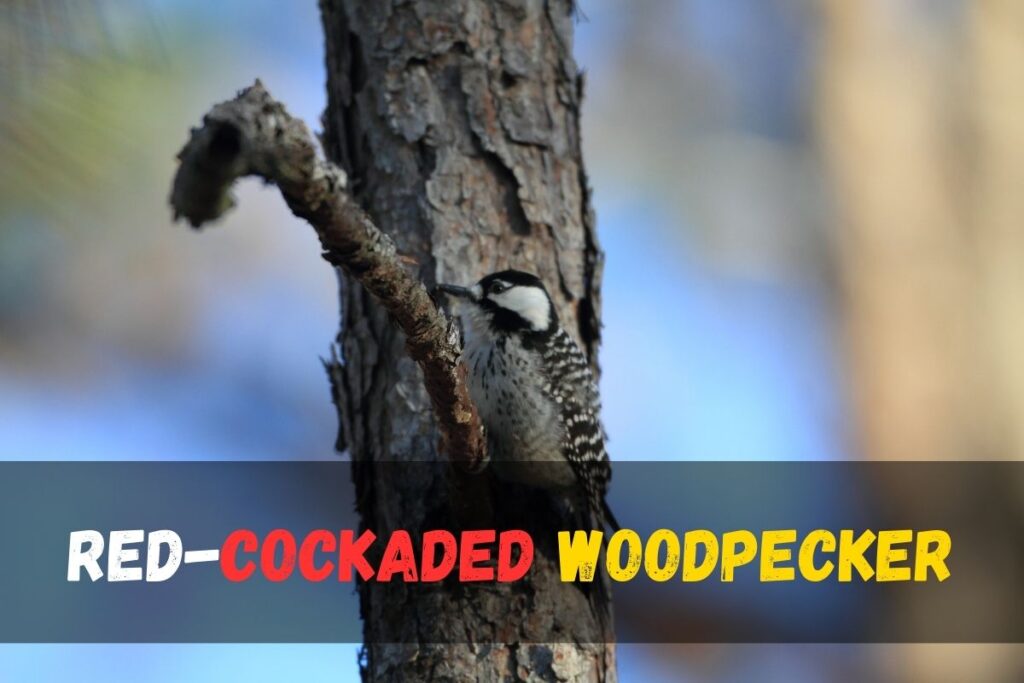
Where to Look for Them
Red-cockaded woodpeckers are a rare and endangered species, making specific habitats crucial for their survival. In Florida, prime locations for spotting them include the Apalachicola National Forest, Osceola National Forest, Ocala National Forest, Eglin Air Force Base, Blackwater River State Forest, and Tate’s Hell State Forest. Birdwatching enthusiasts can also explore St. Marks National Wildlife Refuge, J.N. “Ding” Darling National Wildlife Refuge, and Merritt Island National Wildlife Refuge are two renowned conservation areas
Appearance
In terms of appearance, these woodpeckers are characterized by black-and-white spots and bars across their bodies. The red marking, from which they derive their name, is confined to the top of the males’ cheeks. Both males and females share a similar black-and-white coloration, with barred stripes on the wings and a mottled pattern on the chest. However, the red streak is a distinguishing feature present only in males.
Habitat
Red-cockaded woodpeckers are highly dependent on specific habitats, predominantly residing in mature pine forests with open understories. They have a unique nesting behavior, excavating cavities in living longleaf pine trees. Unfortunately, their habitat has been significantly affected by deforestation, logging, and fragmentation, leading to a decline in their population and earning them an “Endangered” status.
Diet
Their diet consists mainly of insects, with a specialization in feeding on bark beetles, a major pest of pine forests. Additionally, they consume other arthropods like spiders and millipedes, along with some plant material, including pine seeds and berries when insect populations are scarce. This foraging behavior makes them vital for the health of pine forests, as they help control insect populations that could otherwise harm the trees.
Population
The Red-Cockaded Woodpecker has faced a declining population since the 1960s, leading to its endangered status since 1970. The ongoing threats include habitat loss due to logging and suburban expansion. Efforts are underway to protect and restore both the species and its habitat. Conservation initiatives are crucial to ensuring the survival of this family-oriented woodpecker species in the wild.
Yellow-bellied Sapsucker
Introduction:
Florida is home to a variety of woodpecker species, each with its unique characteristics. One notable woodpecker in the region is the Yellow-Bellied Sapsucker. Let’s delve into the key aspects of this fascinating bird.
Identification:
The Yellow-Bellied Sapsucker is a medium-sized woodpecker known for its distinctive features. With a length of 7-8 inches and a wingspan of 13-16 inches, these birds boast black and white plumage. Both males and females have a red cap on their heads, but only the male displays a red throat. The defining characteristic is their bright yellow belly, which gives them their name. Recognizable by their chisel-like bill, they exhibit a unique feeding behavior involving drilling small sapwells in tree trunks.
Where to Look for Them:
If you’re eager to spot Yellow-Bellied Sapsuckers in Florida, consider exploring wooded areas and forested regions. State parks like Myakka River State Park, Wekiwa Springs State Park, and the Big Cypress National Preserve are excellent locations. Other birdwatching hotspots, including Merritt Island National Wildlife Refuge and St. Marks National Wildlife Refuge, offer opportunities to observe these woodpeckers in their natural habitat.
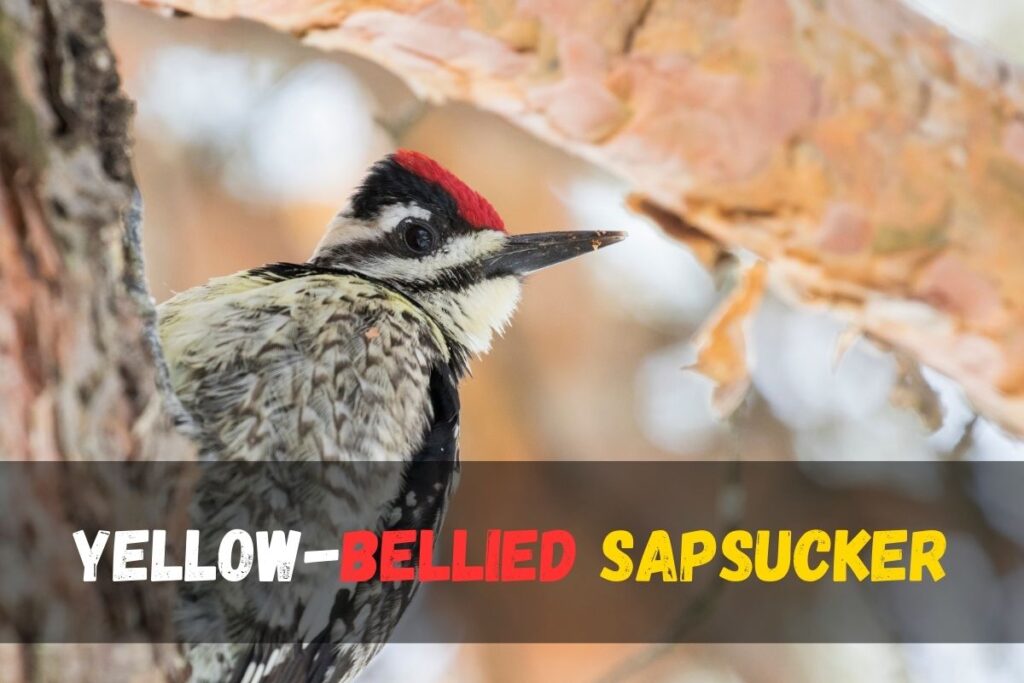
Appearance:
Distinguishing between male and female Yellow-Bellied Sapsuckers is relatively straightforward. The red throat is a prominent feature in males, while females have a white throat. Both genders share red foreheads, and females may exhibit a faint yellow coloring on their bellies. Their black and white barred wings and back, coupled with a bright yellow belly, make them visually striking against the backdrop of trees.
Habitat:
Yellow-bellied sapsuckers are migratory birds, often visiting Florida during the winter months. They favor a range of habitats, including forests, woodlands, and orchards. Particularly drawn to birch and maple trees, these woodpeckers thrive in areas with a mix of deciduous and coniferous trees. Their nesting behavior involves boring holes into trees to create cavities, where they collaboratively raise their young.
Diet:
The primary diet of Yellow-Bellied Sapsuckers revolves around sap, extracted by drilling small holes in tree trunks. Beyond sap, they consume insects, fruits, and occasionally small birds. During the winter months when sap is scarce, they adapt their diet to include fruits and berries. Their feeding technique not only sustains them but also influences the ecosystem by attracting insects to the sapwells.
Population:
As classified by the International Union for Conservation of Nature (IUCN), the Yellow-Bellied Sapsucker is labeled as a species of “Least Concern.” While stable populations are maintained in many regions, localized declines have been reported due to habitat loss. Conservation efforts have concentrated on preserving mature forested areas, ensuring a mix of deciduous and coniferous trees—a key factor in sustaining their numbers.
Northern Flicker
Identification
The Northern Flicker, scientifically known as Colaptes auratus, is a prominent woodpecker species found throughout Florida. Recognizing them is relatively easy due to their distinct characteristics. Northern Flickers have a brownish body with bright yellow tail feathers and underparts. Notably, they display black crescents, bars, and spots in their plumage. Their unique markings set them apart from other woodpeckers, making them easily identifiable.
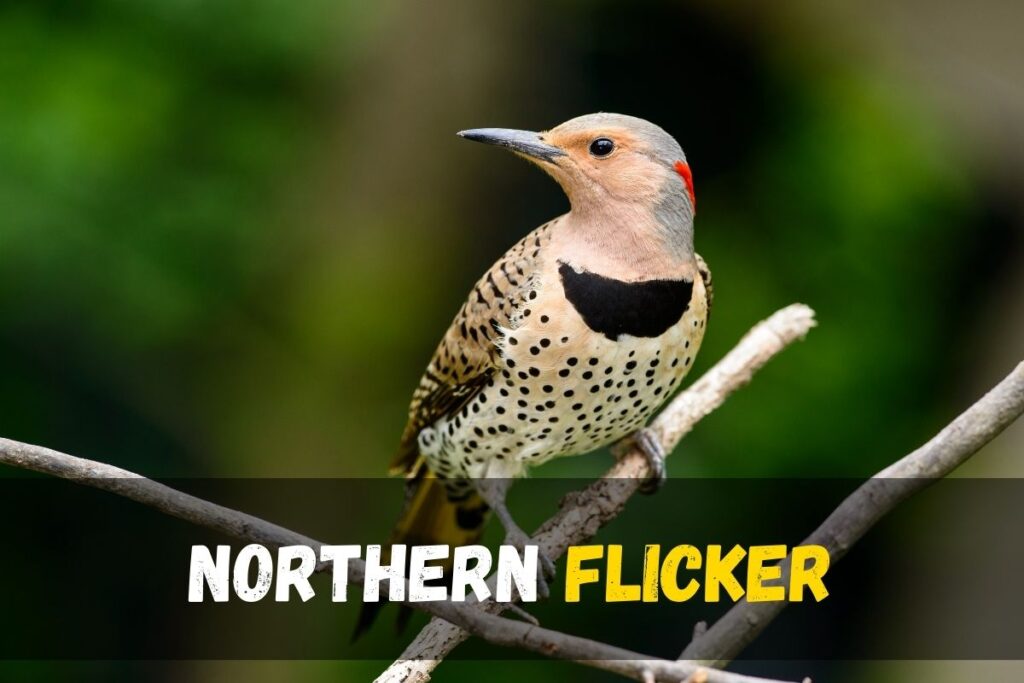
Where to Look for Them
Northern Flickers are a common sight in various habitats across Florida, and bird enthusiasts can easily spot them without venturing into deep forests. These woodpeckers prefer areas such as yards, parks, edges, and woodlands. Some recommended locations for observing Northern Flickers include state parks like Myakka River State Park, Wekiwa Springs State Park, and Big Cypress National Preserve. Additionally, birdwatching hotspots like Merritt Island National Wildlife Refuge, J.N. “Ding” Darling National Wildlife Refuge, and St. Marks National Wildlife Refuge are known for their Northern Flicker populations.
Appearance
With an average wingspan of 14-16 inches and a weight ranging from 4-6 ounces, Northern Flickers are among the larger woodpecker species. They have a unique and recognizable physical appearance, characterized by a down-curved bill, a small and round head, and an extended, flared tail. The brownish body color, coupled with bright yellow tail feathers, distinguishes them from other woodpeckers. Notably, the presence of black crescents, bars, and spots adds to their distinctive features.
Habitat
Northern Flickers are versatile in their habitat choices. While they are commonly found in open wooded areas, gardens, and parklands, they have adapted well to human-modified landscapes, including urban areas. They nest in various locations, including dead or decaying trees, live trees, utility poles, and even nest boxes. Their adaptability to different environments contributes to their widespread distribution in Florida.
Diet
The diet of Northern Flickers primarily consists of insects, which they forage for on the ground by digging through leaf litter and soil. They are skilled insect hunters, feeding on ants, beetles, caterpillars, and termites. During the winter when insects are scarce, they turn to berries and seeds. Their unique feeding behavior, such as drumming at the ground, sets them apart from other woodpeckers. Northern Flickers also use their long tongues to extract sap from trees.
Population
The Northern Flicker boasts a robust population, estimated to be between 10 and 20 million individuals. Despite habitat loss in the past, particularly due to deforestation, they have adapted well to human-modified landscapes in Florida. Currently categorized as “Least Concern” by the International Union for Conservation of Nature (IUCN), conservation efforts focus on preserving and restoring native habitats to ensure the continued survival of this remarkable woodpecker species.
Pileated Woodpecker
Identification
The Pileated Woodpecker, scientifically known as Dryocopus pileatus, is the largest woodpecker species found in Florida and North America. Recognizing these majestic birds is relatively easy due to their distinctive features. Measuring 16-19 inches in size, they are comparable to crows, adorned with a black body, white neck, and a striking red crest on the back of their heads. Notably, the males boast a red stripe on the side of their faces, contributing to their unique appearance.
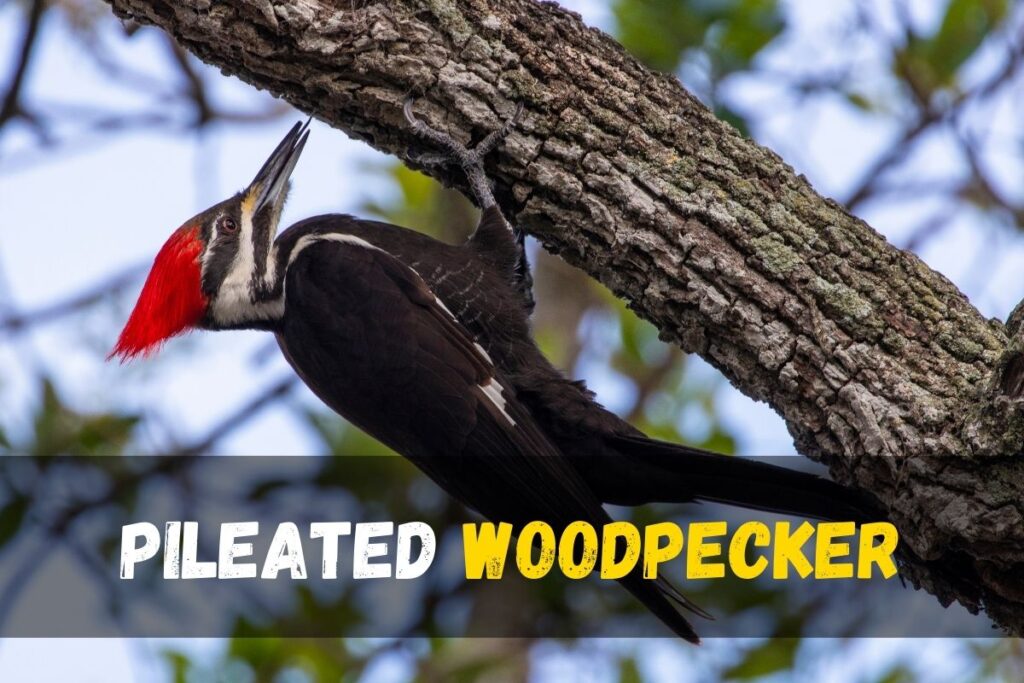
Where to Look for Them:
Pileated Woodpeckers prefer mature forests, parks, and wooded areas with large trees. Key locations for observing them in Florida include the Apalachicola National Forest, Osceola National Forest, and Ocala National Forest. State parks such as Myakka River State Park, Wekiwa Springs State Park, and Big Cypress National Preserve are also promising spots. Birdwatching enthusiasts may find success at Merritt Island National Wildlife Refuge, J.N. “Ding” Darling National Wildlife Refuge, and St. Marks National Wildlife Refuge.
Appearance:
These woodpeckers exhibit a striking black-and-white coloration, with a prominent red crest. Their wingspan reaches up to 29 inches, and they weigh approximately 12 ounces. Pileated Woodpeckers are often likened to crows in shape and size. Notably, they are known for their distinctive rectangular nest holes, unlike the round or oval holes of other woodpecker species.
Habitat:
The preferred habitat of Pileated Woodpeckers includes mature forests and open woodlands. They specifically seek out dead trees and logs, which offer both food and suitable nest cavities. Despite their adaptability to artificial nest boxes, they thrive in environments with an abundance of decaying trees.
Diet:
These woodpeckers are omnivores, feasting on a varied diet that includes carpenter ants, wood-boring beetles, berries, nuts, and even poison ivy berries. Their foraging technique involves excavating decaying trees using their strong bills and long tongues. Pileated Woodpeckers are particularly drawn to suet, making them frequent visitors to suet feeders.
Population:
The Pileated Woodpecker, once facing decline due to deforestation, has made a remarkable comeback. Currently classified as “Least Concern” by the International Union for Conservation of Nature (IUCN), their population is stable and expanding. Conservation efforts focus on preserving and restoring their native habitats, ensuring that these impressive birds continue to thrive as essential contributors to Florida’s biodiversity.
Ivory-billed Woodpecker
Identification
The Ivory-billed Woodpecker (Campephilus principalis) is a remarkable bird species, recognized as the largest woodpecker in the United States. Despite being believed extinct, there have been unconfirmed sightings in recent years, sparking hope for their continued existence.
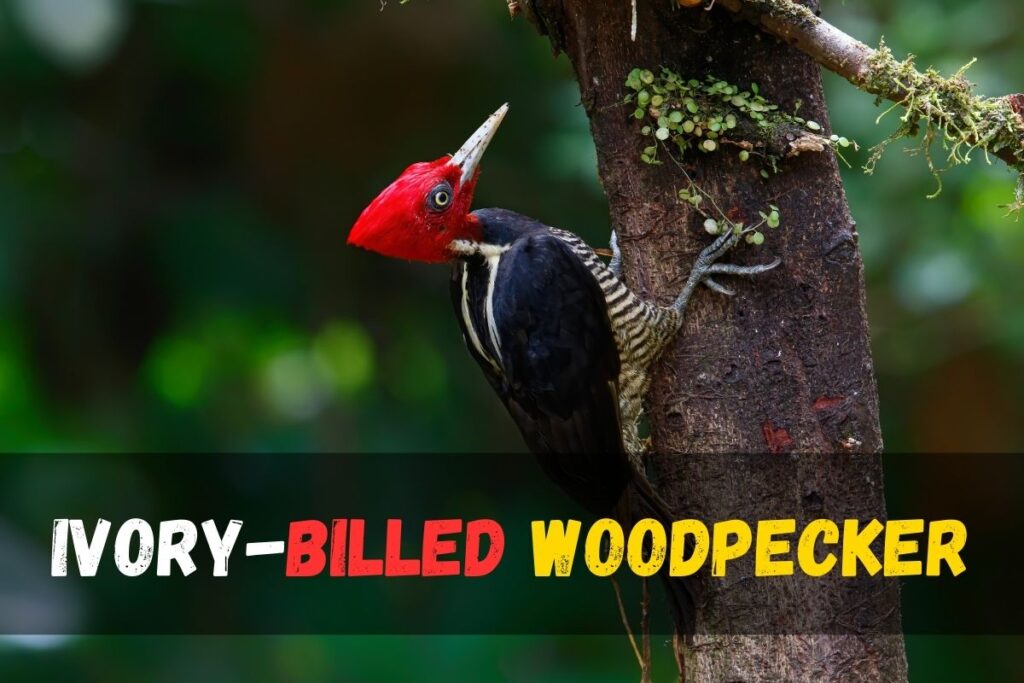
Where to Look for Them
Historically, Ivory-billed Woodpeckers were found in old-growth forests and swampy areas, primarily in the southeastern United States. Though believed to be extinct in Florida, there have been reported sightings in other regions such as Arkansas, Louisiana, and South Carolina. Bird enthusiasts and researchers often explore these areas, hoping to catch a glimpse of this elusive species.
Appearance
Identifying Ivory-billed Woodpeckers involves recognizing their distinctive features. These woodpeckers are sizable, measuring around 18-20 inches in length, with wings that can stretch over 30 inches wide. The male sports a red crown on the top of its head, resembling the pileated woodpecker, while the female has a black crown. Their plumage is predominantly black and white, with a large, ivory-colored bill.
Habitat
These birds prefer old forests, where they climb dead or dying trees in search of their favorite food – beetle larvae that burrow into wood. They require large, mature trees for nesting and foraging. Although their historic range includes Florida, recent sightings are scarce in the state, and their nesting and foraging grounds have been disturbed by human activities.
Diet
Ivory-billed Woodpeckers have a diverse diet, feeding on insects, fruits, nuts, and seeds. Their keen ability to find and extract beetle larvae from decaying wood showcases their unique foraging skills. Interestingly, they are known to nest earlier in the spring than many other woodpecker species, possibly to seek shelter from spring rains.
Population Status and Conservation
The population status of Ivory-billed Woodpeckers remains uncertain, with conflicting reports of sightings and no official confirmation. Conservation efforts are crucial to protect their potential habitats and address the threats posed by habitat destruction. Reporting any potential sightings to organizations like the state Audubon society is essential for monitoring and conservation purposes.
Golden-Fronted Woodpecker
Identification
The Golden-fronted Woodpecker (Scientific Name: Melanerpes aurifrons) is a distinctive woodpecker species found in Florida. Identifying these birds is facilitated by their medium size, pointed and long bills, and a wingspan of approximately 17 inches. Both sexes share a similar size, featuring a pale gray main body with black and white barred wings. Notably, males exhibit a bold yellow nape, a bright yellow spot on the lower abdomen, a red crown, and a gold patch on the forehead.
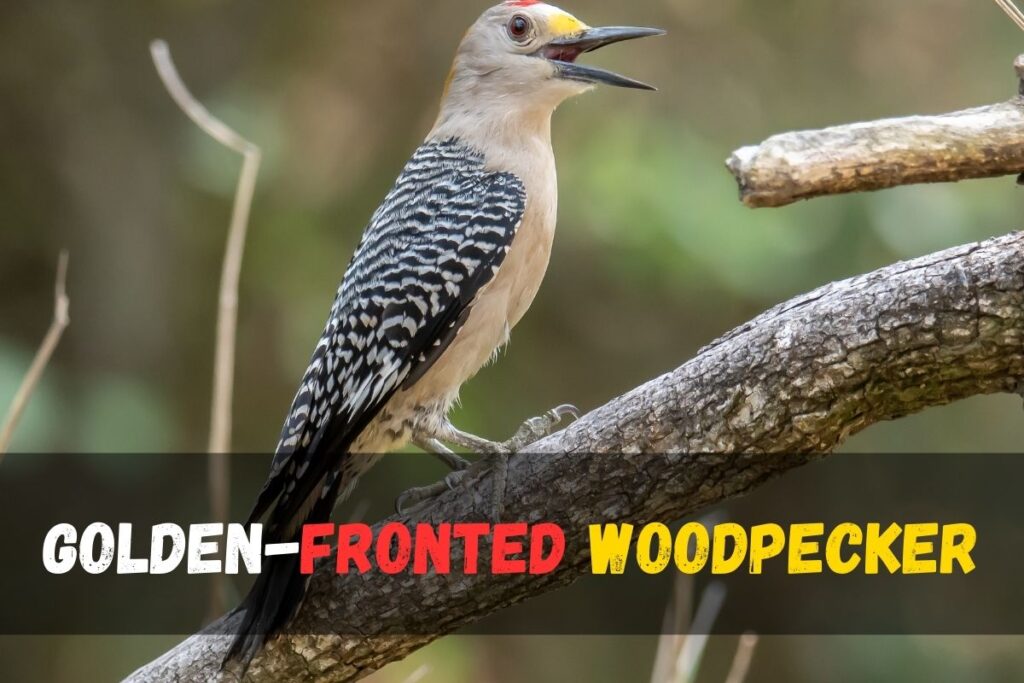
Where to Look for Them
While primarily native to Texas and Oklahoma, the Golden-fronted Woodpecker has made occasional appearances in Florida. These birds can be found in brushlands, tropical forests, wooded habitats, and even suburban yards or parks, especially if suet is available. The Florida Ornithological Society lists them as accidental species, highlighting their rarity in the state.
Appearance
The distinguishing features of the Golden-fronted Woodpecker include a golden front coloring, a bright yellow nape, a yellow spot on the lower abdomen, and, in males, a red crown. Their wings are black and white barred, and both males and females have tan breasts with no black patch or spotting below. The males also possess a more vibrant red crown.
Habitat
Golden-fronted Woodpeckers prefer spacious woodlands and dry brush as their habitat. They are cavity nesters, utilizing birdhouses, trees, or similar structures for raising their young and laying eggs. Their territorial nature, especially among males, is noteworthy, and they can be drawn to feeders using oranges and jam.
Diet
These woodpeckers feed on a diet consisting of fruits and insects, particularly grasshoppers. They are active in late afternoons and mornings, pecking around trunks of deciduous trees, large branches, and various vegetation. The loud calls of the Golden-fronted Woodpecker are often heard, especially during the spring, making them easily noticeable.
Population
While primarily residing in Texas and Oklahoma, Golden-fronted Woodpeckers have been sporadically spotted in Florida. Their population in Florida is considered rare, and their distinct features, including the golden nasal tufts and napes, make them a unique and captivating species for bird enthusiasts.
FAQ’S
What is the most common woodpecker in the US?
The downy woodpecker holds the title of the most prevalent woodpecker species in the United States. It is not only the smallest woodpecker in North America but also the most common eastern woodpecker in the region.
What are the two largest woodpeckers in the world?
The imperial woodpecker and the ivory-billed woodpecker hold the distinction of being the two largest woodpecker species globally. Top of Form However, it’s worth noting that these species are most likely extinct, adding a somber context to the discussion about the diversity of woodpeckers globally.
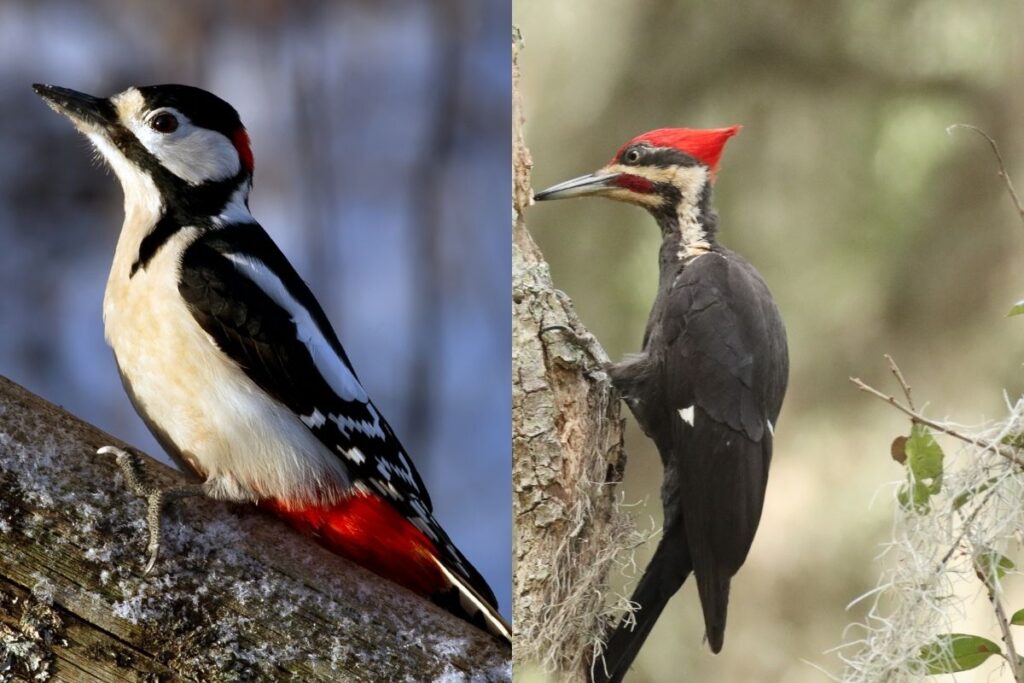
Is a woodpecker a flying bird?
Yes, woodpeckers are flying birds. They navigate through the air with short swoops using their unique feet, which have two toes pointing forward and two toes pointing backward. This adaptation helps them cling to tree trunks while their strong and rigid tail feathers provide additional support, allowing the bird to hold itself against the tree during its flight.
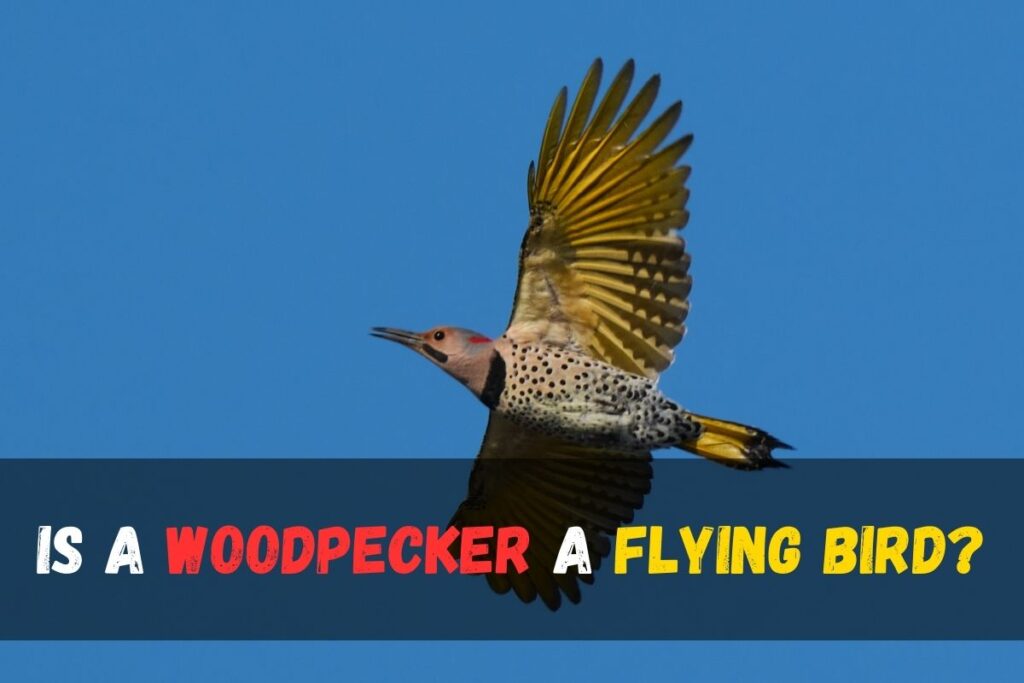
Where do woodpeckers nest in Florida?
Woodpeckers in Florida prefer nesting in dead royal palm trees, as discovered by Diamond, who inspected over 1,860 nest cavities in 967 trees. Surprisingly, more than 25 percent of woodpecker holes were found in these specific palms, making them the favored nesting sites in South Florida.
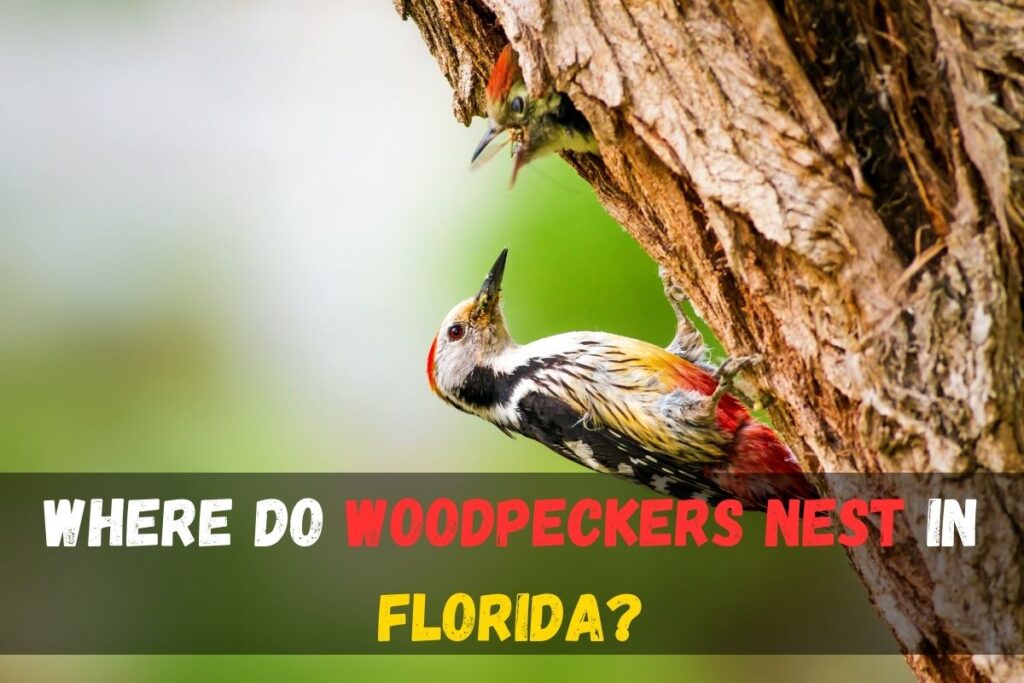
What is the strongest woodpecker?
The most robust woodpecker is the Powerful Woodpecker, belonging to the genus Campephilus. This impressive bird is among the largest black woodpeckers and stands out within the Picidae family. Due to its substantial size, the Powerful Woodpecker employs unique adaptations to effectively maintain its grip on vertical supports.
What is the rarest type of woodpecker?
The rarest type of woodpecker is the critically endangered ivory-billed woodpecker, which recently gained widespread attention and superstardom when birders reported a sighting of the believed-to-be-extinct species. This woodpecker had been in near total obscurity, making its sudden appearance a significant event in the birding community
What is the smallest woodpecker in the world?
The world’s smallest woodpecker is the bar-breasted piculet (Picumnus aurifrons). This tiny species typically measures no more than 7.5 cm in length and weighs a mere 8–10 g, making it the smallest woodpecker globally.

